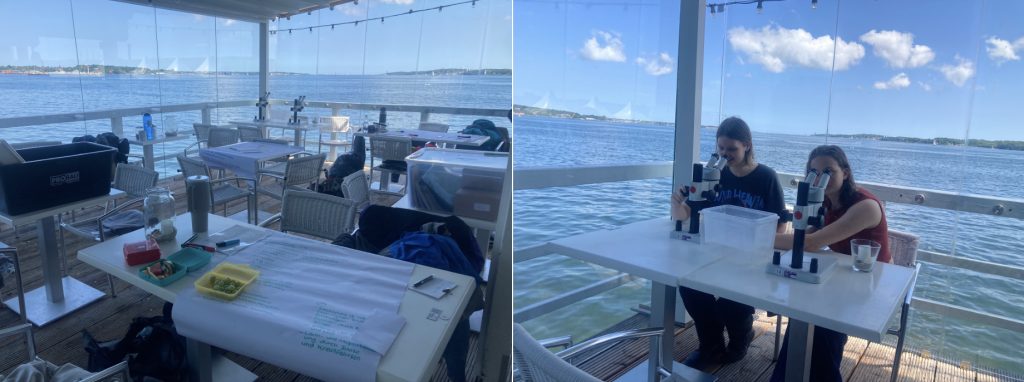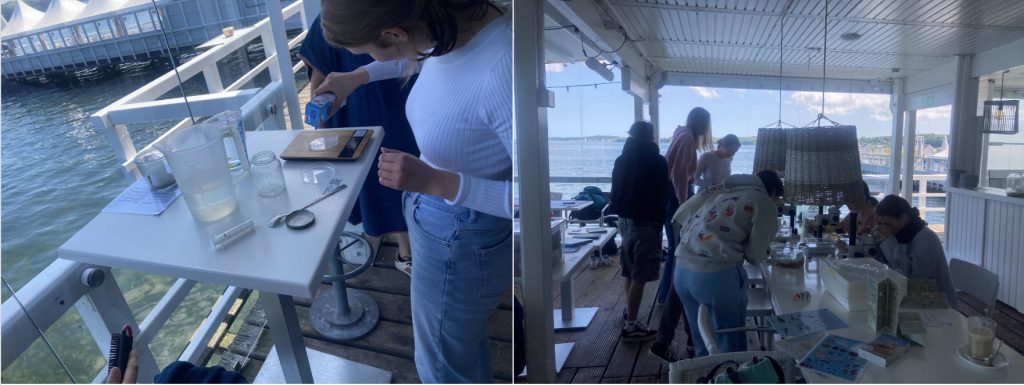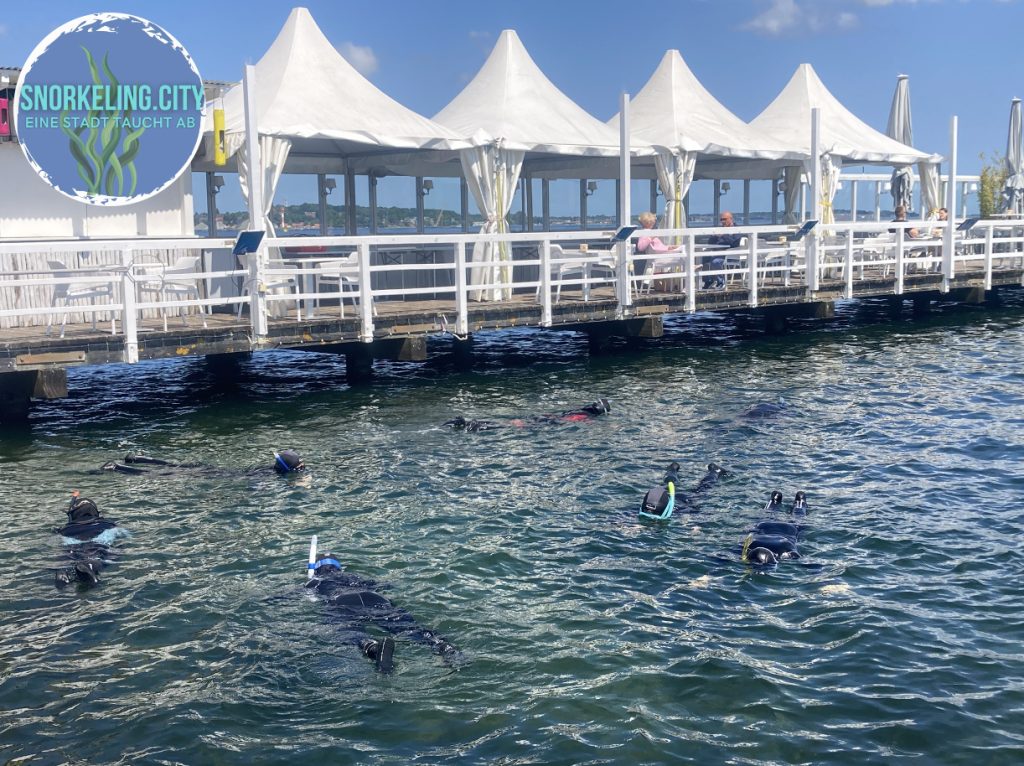Exploring the underwater world of Kiel and discovering a wide variety of marine organisms – all guided by professionals. Thanks to the environmental education project Snorkeling.City, we, 24 students from Kiel University (CAU), had the opportunity to experience this first-hand.
As part of an excursion, we met with the project coordinator Dr. Henry Göhlich and his team at the SEEBAD Düsternbrook. Our workspace for the day couldn’t have been better: a beautiful view over the Kiel Fjord and a light breeze to start off the morning. The team introduced themselves and gave us an overview of what to expect and how to use the equipment properly. We immediately felt in good hands, surrounded by experts in marine biology.
After the introduction, we students presented short talks that we had prepared in advance, which sparked interesting group discussions. Topics included the formation of the Baltic Sea, native species, and political agreements related to marine conservation. It was fascinating to see how many different layers of observation exist within the Baltic Sea ecosystem, how they are interconnected, and how human impact affects them. Once again, it became very clear that this diverse ecosystem is under severe pressure – and that action is urgently needed. Politicians also need to acknowledge the impact of fishing and marine pollution.

To allow as much time as possible in the water, we were split into two groups. I was in the first group and started right away with snorkeling, while the second group began by observing pipefish, microplankton, and other marine organisms under the microscope or in water containers.
Most of us had some experience with wetsuits, and everyone quickly got used to their mask and snorkel. The biggest challenge was probably taking the plunge into the cold water – no time to overthink it, just jump! Once the water inside the wetsuit warmed up, it wasn’t so bad anymore, and the 30–45 minutes in the water flew by. We were so focused on searching and observing the seabed that time passed in an instant. Occasionally, we had to dodge a jellyfish and, of course, keep an eye on our buddy. A few of us even spotted pipefish – sadly, I wasn’t one of the lucky ones. But finding crabs and barnacles was much easier, and many of us captured great underwater footage with our cameras.

After that, it was our turn to explore microplankton and other tiny sea creatures using microscopes. It was great fun to study the underwater world in a more relaxed setting, where we could take our time and observe the organisms up close. To demonstrate the difference in salinity between the Baltic and North Seas, we prepared saltwater mixtures and tried a drop from each – the “North Sea water” was clearly much saltier! But of course, anyone who’s been swimming in the sea can tell the difference without a test.
Eventually, the day came to a close. We wrapped up the excursion by sharing our impressions and highlighting the most interesting findings. It was a wonderful and insightful experience – full of new perspectives on the sea and the unique ecosystem of the Baltic.
Written by: Sara Hundseder (Student B.Sc Biology CAU) & Kim Wagner (Snorkeling.City Outreach Team)
About the Snorkeling.City project:
What lives just beneath the surface – right on our doorstep in the Baltic Sea? That’s exactly what Snorkeling.City aims to reveal. Now in its second year, the project takes schoolchildren from the Kiel region into the water – equipped with masks, snorkels, and a basic understanding of marine biology. The vision behind it: every child growing up by the Baltic Sea should have the chance to experience this unique underwater world with their own eyes.
Originally designed as an extracurricular environmental education program for school classes, Snorkeling.City opened its doors to CAU students for the first time this year. As part of a Bachelor’s course on biodiversity and species identification, more than 20 biology students took the opportunity to dive in themselves – made possible by the Förderverein Alumni and Friends of CAU e.V.
The project is part of the UN Ocean Decade and thrives on a shared enthusiasm for the sea – and the dedication of many helping hands. Support from sponsors such as Pro Ocean, Ocean Summit, and the Bingo! Umweltlotterie, partner institutions like GEOMAR and the BUND Umwelthaus, as well as numerous volunteers, all play a vital role in making Snorkeling.City possible. If you’re passionate about marine conservation, environmental education, or science communication – and would like to get involved in planning, fieldwork, or (financial) support – the team would love to hear from you. We welcome new ideas, helping hands, and curious minds!
Link to webpage: https://ocean-summit.de/mitmachen/snorkeling-city-eine-stadt-taucht-ab-schnorchel-exkursionen-fuer-schulklassen/
